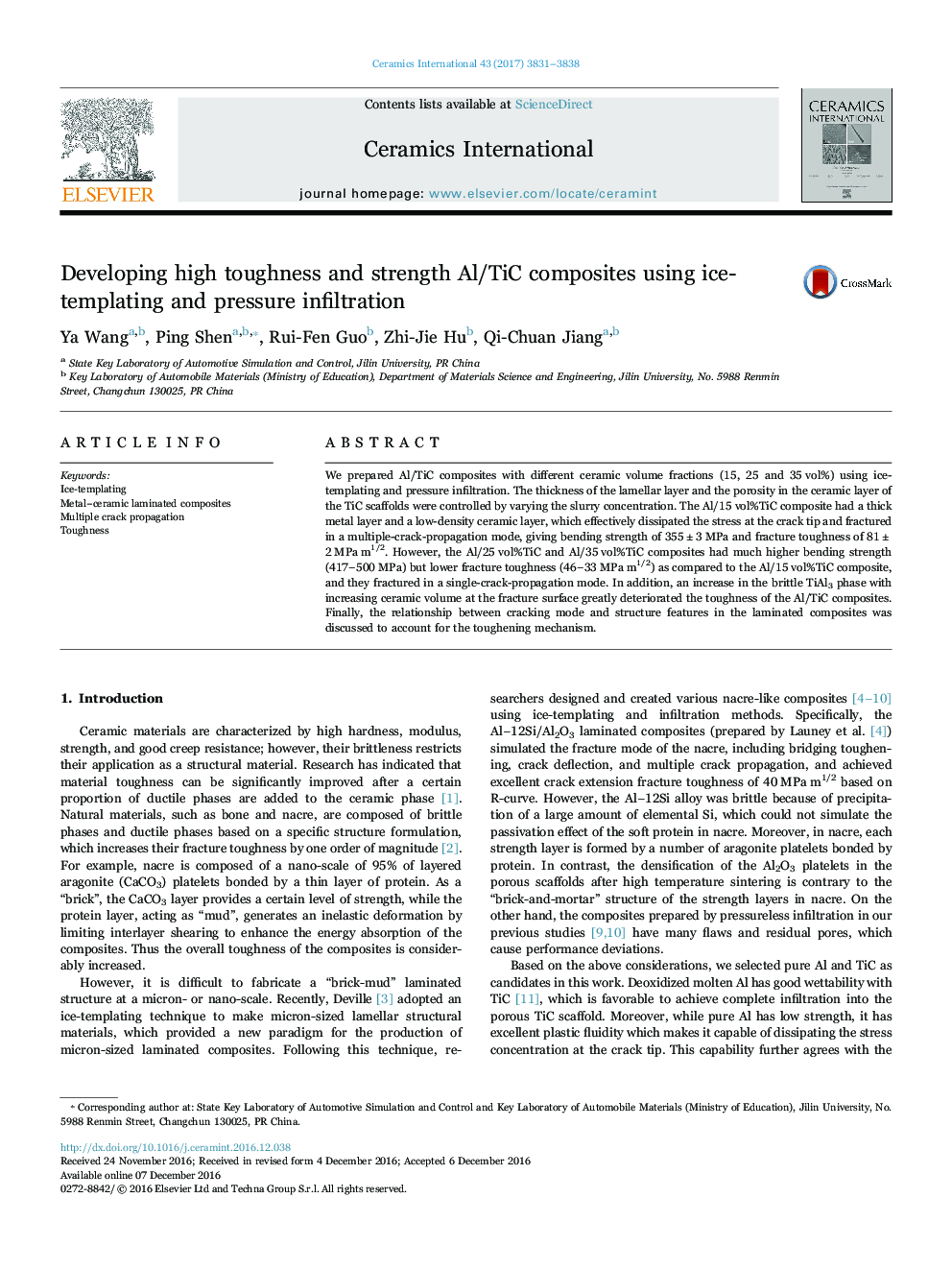| Article ID | Journal | Published Year | Pages | File Type |
|---|---|---|---|---|
| 5438940 | Ceramics International | 2017 | 8 Pages |
Abstract
We prepared Al/TiC composites with different ceramic volume fractions (15, 25 and 35 vol%) using ice-templating and pressure infiltration. The thickness of the lamellar layer and the porosity in the ceramic layer of the TiC scaffolds were controlled by varying the slurry concentration. The Al/15 vol%TiC composite had a thick metal layer and a low-density ceramic layer, which effectively dissipated the stress at the crack tip and fractured in a multiple-crack-propagation mode, giving bending strength of 355±3 MPa and fracture toughness of 81±2 MPa m1/2. However, the Al/25 vol%TiC and Al/35 vol%TiC composites had much higher bending strength (417â500 MPa) but lower fracture toughness (46â33 MPa m1/2) as compared to the Al/15 vol%TiC composite, and they fractured in a single-crack-propagation mode. In addition, an increase in the brittle TiAl3 phase with increasing ceramic volume at the fracture surface greatly deteriorated the toughness of the Al/TiC composites. Finally, the relationship between cracking mode and structure features in the laminated composites was discussed to account for the toughening mechanism.
Related Topics
Physical Sciences and Engineering
Materials Science
Ceramics and Composites
Authors
Ya Wang, Ping Shen, Rui-Fen Guo, Zhi-Jie Hu, Qi-Chuan Jiang,
